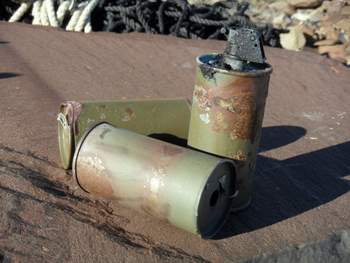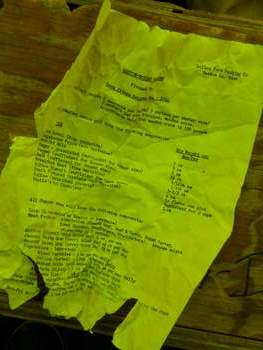People tend to think of Antarctica as a vast, untouched wilderness. Most of it is. However, scientists have been coming to Antarctica for years and conducting a wide variety of experiements and collecting data to analyze at their home institutions. Even the famous explorers, Scott and Shackleton, conducted science while on their quest to be the first to reach the South Pole. Douglas Mawson, an Australian geologist, led an expedition to not only locate the magnetic south pole, but also conducted many scientific experiments and map making along the way.
As with so much of science, modern researchers build upon the science done before them. This is the case with some of our research. Brenda and Gordon are mapping various glacial deposits from earlier ice ages (some as old as 15 million years). They are collecting rock samples to be cosmogenically dated. As they go along, Brenda refers to work done by other scientists about 30 years ago. George Denton mapped some of these same mountains. In the evenings, Brenda has been reviewing his earlier work.
While most of Antarctica remains untouched by man, areas of interest are frequently visited. We have found evidence of others before us. While setting up camp, and getting ice for our water, Brenda found a smoke canister used by the Navy in the 1950s and early 1960s. Mostly likely, these were used to signal helicopters and indicate appropriate landing sites. Over the course of the five days we've been camping on Cloudmaker Peak, we have found three of these canisters.

Yesterday, we took a helicopter on a day trip to the unnamed mountain just south of Cloudmaker. The helicopter brought Twit and Maurice out and then picked us up. All seven of us flew over to the next mountain. John, Perry, Twit, and Maurice headed down the mountain toward the Beardmore GlacierA mass of ice that persists for many years and notably deforms and flows under the influence of gravity. while Brenda, Gordon, and I set to work mapping the older glacial deposits. While walking along one lobe of an ancient moraine, Gordon happened to look down into a hole and something caught his eye. He reached down and pulled out a piece of paper! It was quite wrinkled and a little faded, but still perfectly legible. It turned out to be the menu from a food ration box that someone had brought down during Operation Deep Freeze in 1961.

The list of food is quite interesting. Unlike our modern expedition where we've certainly brought too much food, these scientists were limited in their food intake. One of the items listed was that every fifth day, each man got six lifesaver candies! I guess you could choose to eat them all that same day, or savor them over the five day period until you got your next set.

Who would have ever thought that when we set out to examine glacial deposits from the last ice age in Antarctica, we'd also stumble upon an "archaeological" find?


Comments